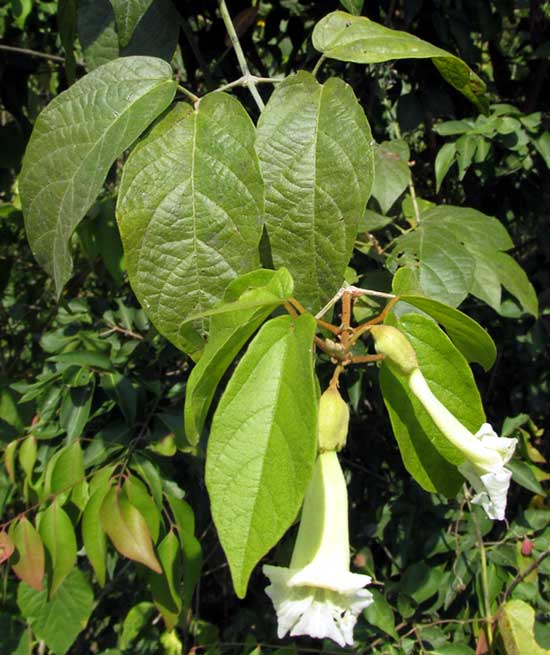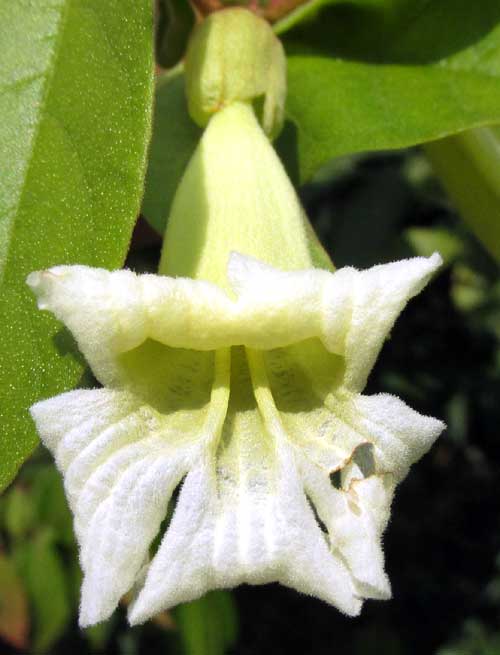Excerpts from Jim Conrad's
Naturalist Newsletter
from the May 1, 2016 Newsletter with notes from a visit to Lacanja Chansayab in the Lacandon Reserve; elevation 200m (650ft), N16.604°, W90.917°; Chiapas, MÉXICO
STIZOPHYLLUM TRUMPET-FLOWER VINE
On April 14th as I wandered gravel roads around the Lacandon village of Lacanja Chansay in Chiapas's Lacandon Reserve, a common woody vine, or liana, was producing conspicuous white flowers, as shown below:

You can see that the leaves are opposite -- two arising at each stem node -- and compound, each leaf consisting of two broad leaflets that are shallowly lobed at their bases. When you have a woody vine with opposite, compound leaves and large flowers with tubular corollas like these, you just have to think it's a member of the Trumpet-Creeper Family, the Bignoniaceae. A close-up of the blossom from the front is shown below:

Despite the Trumpet-Creeper Family being a large one in the humid American tropics, this vine's distinctive features made it easy to identify as STIZOPHYLLUM RIPARIUM, a fairly common species from southern Mexico through all of Central America and most of humid, lowland South America. It has no good English name so our "Stizophyllum Trumpet-Flower Vine" is a cobbled-together one, many species in the family being generally known as trumpet-flowers or trumpet-vines.
Traditionally Stizophyllum riparium has been used extensively in basket-making, the stems appreciated for having strong fibers that, when the stems are moistened, are easily extracted, and pliable.